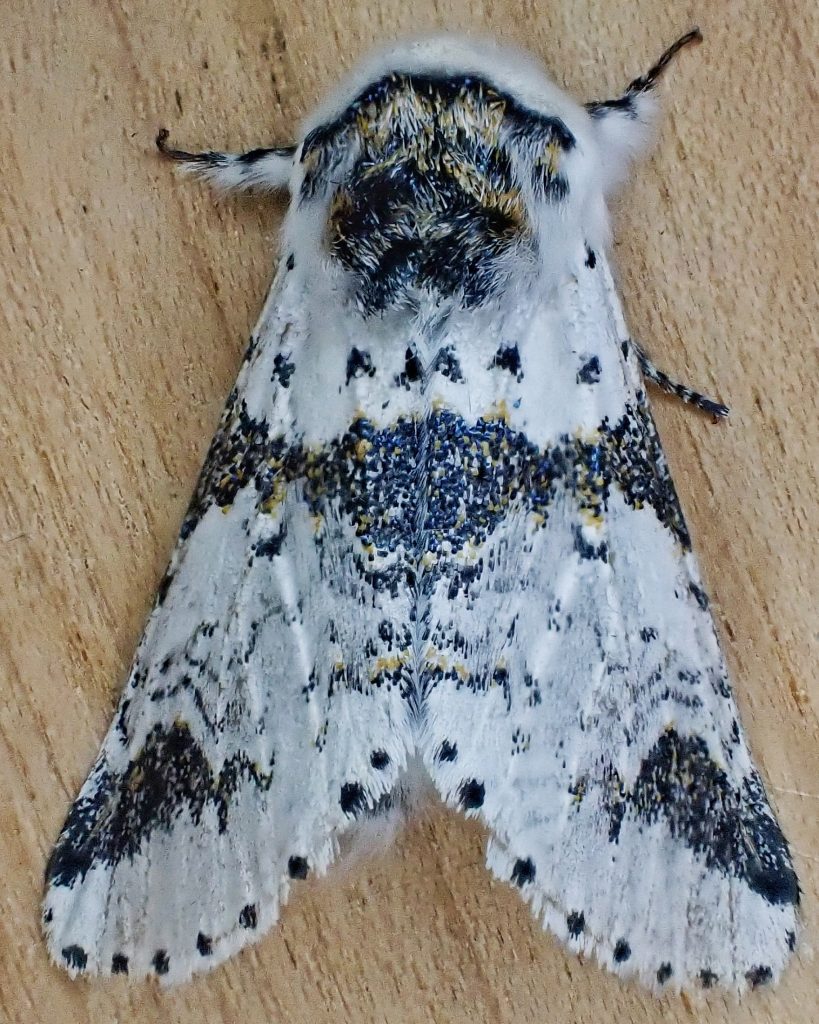
These Furcula scolopendrina (Zigzag Furcula) have to rank right up there with the cutest moths I’ve ever seen. The first time I found one of these beautiful members of the family Notodontidae (coincidentally in the same spot where I found these during the 2nd Night of Moth Week ), I laughed out loud at the sheer cuddlyness of these little moths, and I was not surprised to find out that many people call the members of Furcula kitten moths. They are quite a docile moth, and once they settle on a sheet they’re there for the duration.
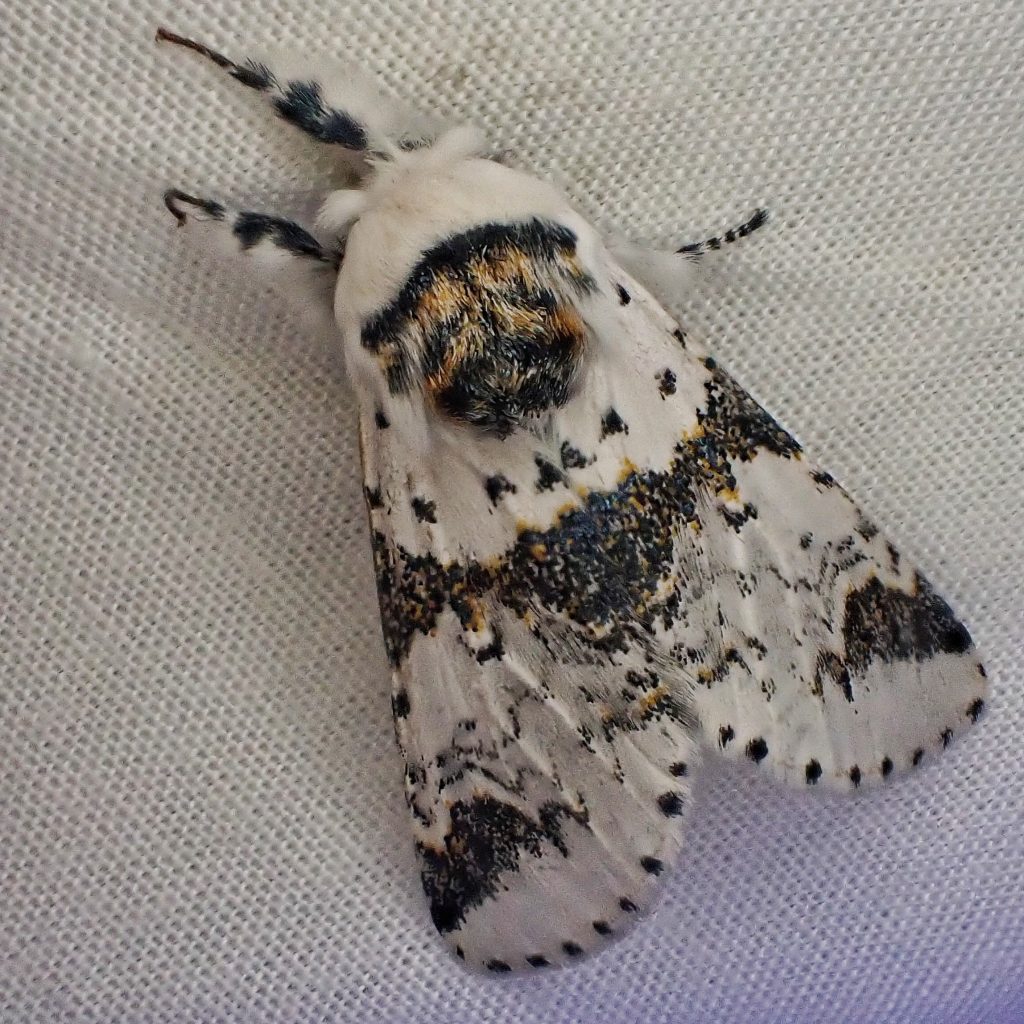
Description– “medium-size (3.5-4.5 cm wingspan) white moth with a wide black median band and black lines and dots crossing the forewings, and with a large back patch on the forewing apex. Hindwings with a black discal mark and a wide but somewhat diffuse dark median band. Both sets of wings have a row of prominent black marginal dots between the veins.” Furcula scolopendrina – University of Alberta Museums Search Site
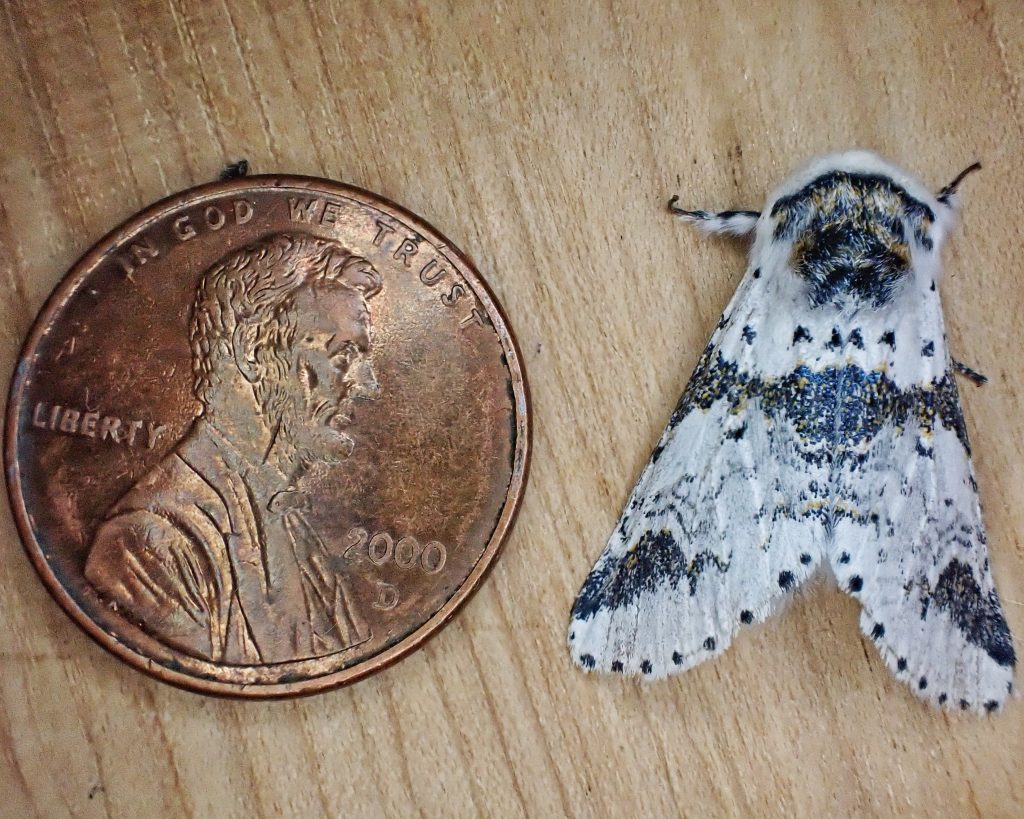
Similar species– “This species can be identified by its white forewing marked with irregular dark gray bands with scattered metallic scales, scalloped lines, and black dots. It is most likely to be confused with Furcula furcula and Furcula cinereoides, both widespread moths in our area. Most individuals of these two species have gray anterior thoraxes, unlike the pure white one of F. scolopendrina. Also, both are grayer with different color or shape of the dark median band. The dark median band of F. furcula is wider with straighter margins than that of F. scolopendrina, and in F. cinereoides, it is gray, not black. Furcula modesta, a rare species from British Columbia, has a yellow forewing, and the median band lacks the metallic scales of F. scolopendrina.” PNW Moths | Furcula scolopendrina
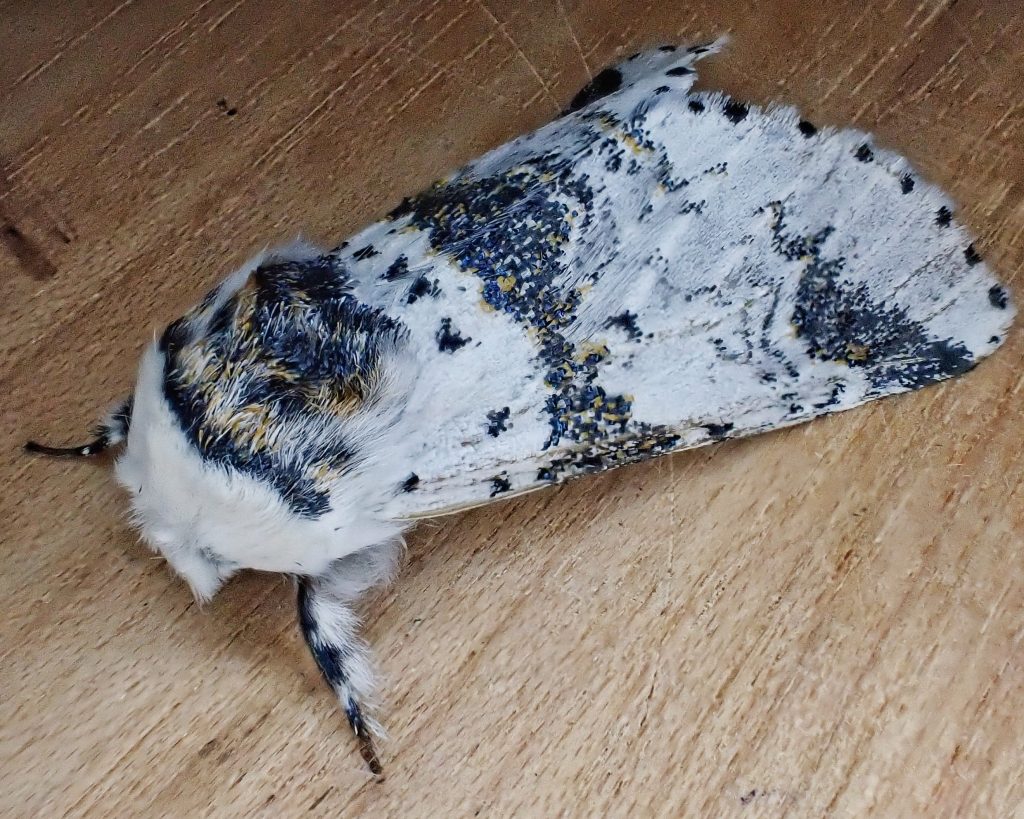
Habitat– “This species is common in moist forest and riparian habitats throughout the Pacific Northwest, including coastal rainforests, mixed hardwood forests west of the Cascades, high elevation montane conifer forests, and along creeks and rivers at low elevations east of the Cascades. “ PNW Moths | Furcula scolopendrina
Range– Western and northeastern North America; region wide in appropriate habitat in the PNW, but mostly absent from the shrub steppe.
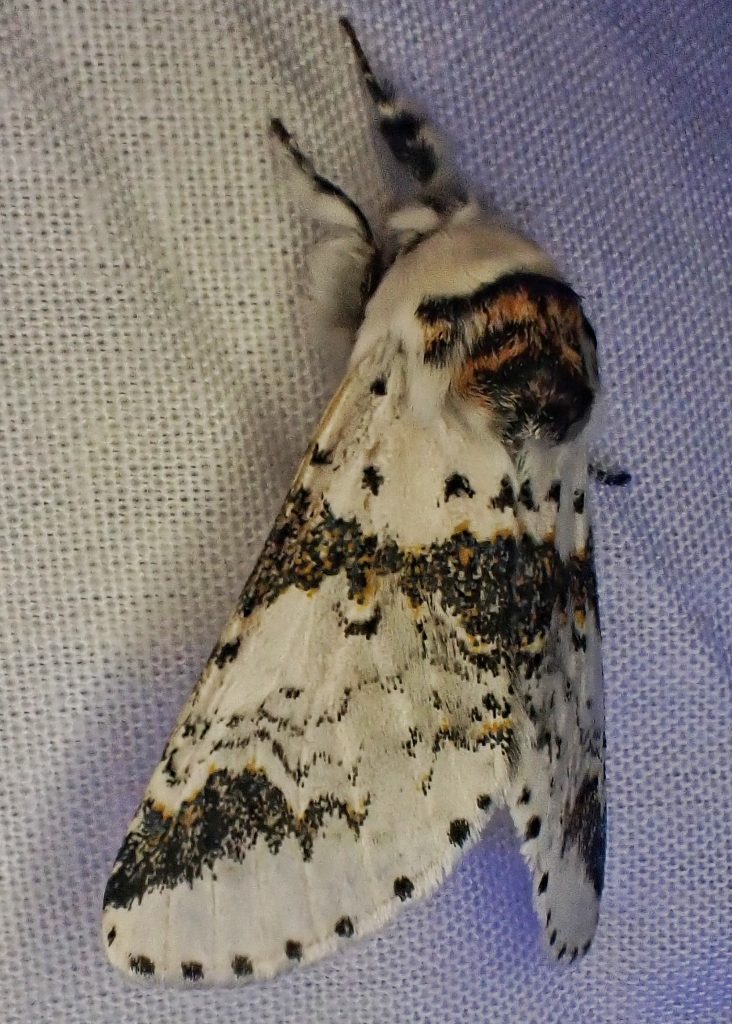
Eats– Larvae are “a foodplant specialist on Salicaceae, including both willows (Salix spp.) and cottonwoods (Populus spp.), but has also been reported feeding on birches (Betula spp.) in the Betulaceae.” PNW Moths | Furcula scolopendrina
Eaten by– Presumably a host for parasitoids in Hymenoptera and Diptera, and probably preyed upon by insectivores of all classes, but I can find nothing specific for this species.
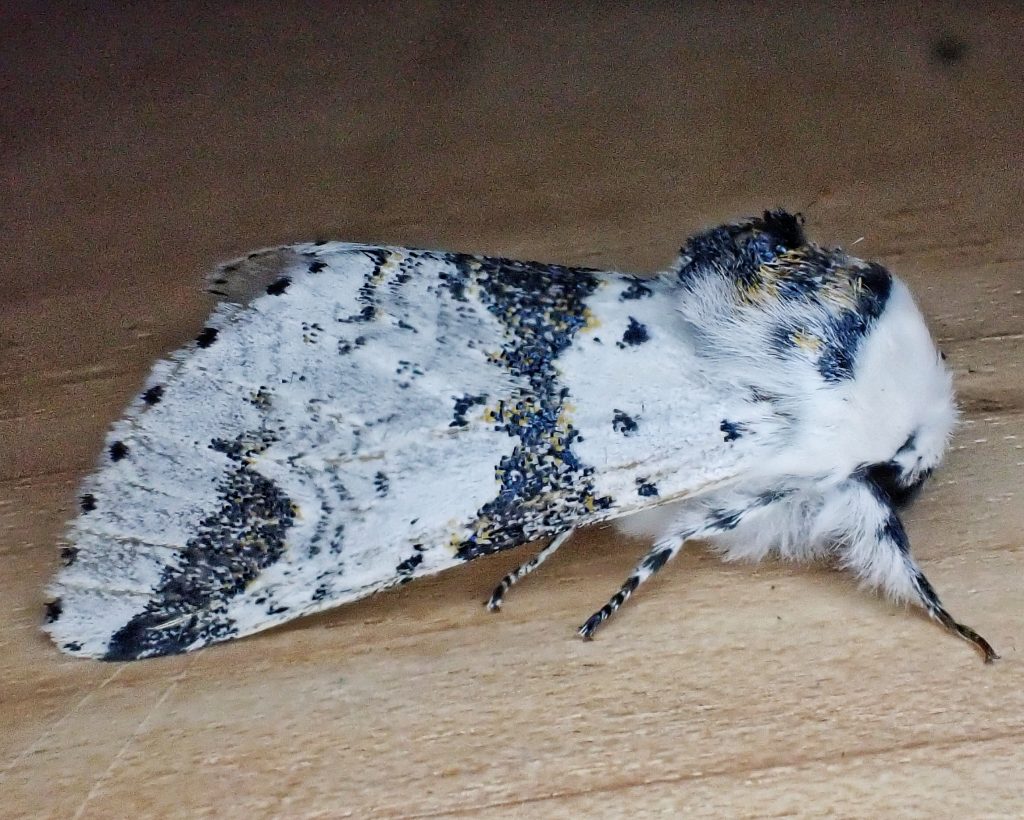
Adults active-Nocturnal; flies from April into August, with a peak in June-July
Life cycle– Probably bivoltine under good conditions
Etymology of names– Furcula is from the Latin word for ‘fork’, referring to the larva’s forked anal prolegs. The specific epithet scolopendrina is from the Greek for ‘centipede like’, and must somehow be about the larvae since there is nothing centipedish about the adults, but I cannot ascertain to what it refers.
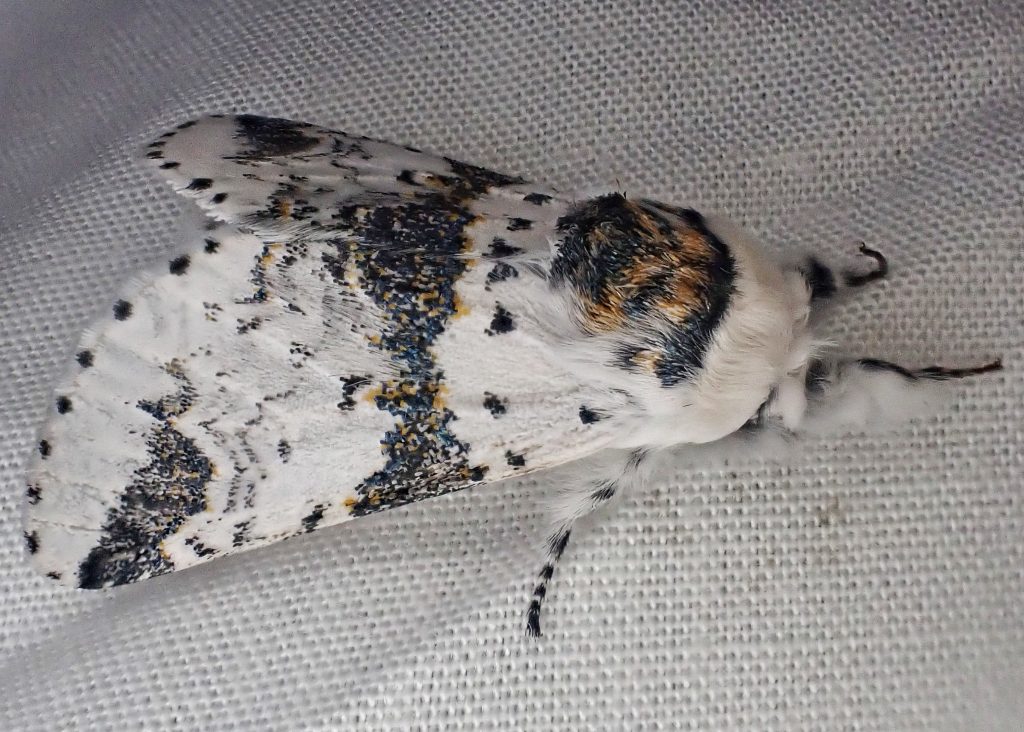
PNW Moths | Furcula scolopendrina
Species Furcula scolopendrina – Zigzag Furcula Moth – Hodges#7940 – BugGuide.Net
Furcula scolopendrina – University of Alberta Museums Search Site
http://mothphotographersgroup.msstate.edu/species.php?hodges=7940
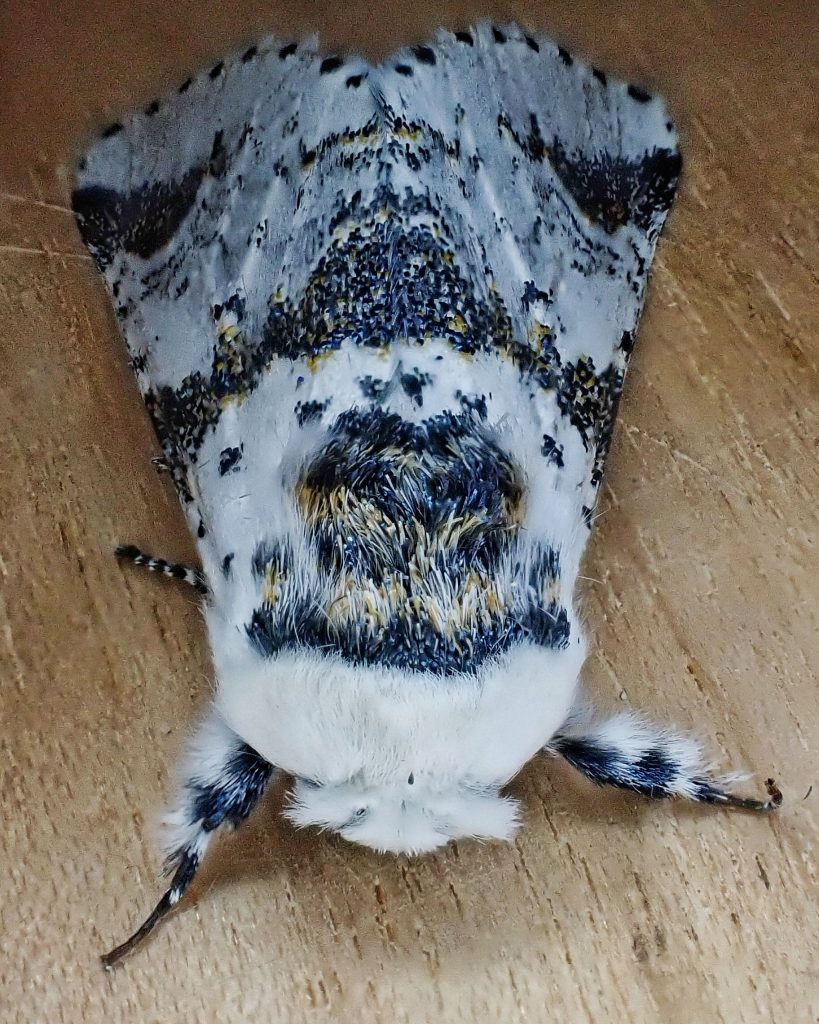
“Kitten moth” seems about right. Hope I can see one someday.
I hope so too, Sharon!
What a lovely moth! As a gardener, I appreciate that you list the host plants. I am working on creating a supportive habitat for pollinators (including moth species) in both my yard and in a demonstration garden. We are dryer here, in the Roseburg area, so have to take that into account.I love your posts always. I am learning so much!
Thank you, Julie! And thank you for creating pollinator friendly habitats!